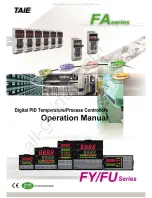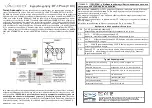
Operation
EcoBoost MPPT Operator's Manual
27
26
4.0
4.3 Load Control Information
The primary purpose of the load control function is to
disconnect system loads when the battery has discharged to
a low state of charge, and to reconnect system loads when
the battery is sufficiently recharged. System loads may be
lights, DC appliances, or other electronic devices. The total
current draw of all loads must not exceed maximum load
ratings of 20 Amps (EB-20/M) or 30 Amps (EB- 30/M or EB-
40/M).
CAUTION:
Equipment Damage
Do not wire any AC inverter to the load terminals of the
EcoBoost. Damage to the load control circuit may result. An
inverter should be wired to the battery. If there is a possibility
that any other load will sometimes exceed the EcoBoost MPPT's
maximum voltage or current limits, the device should be wired
directly to the battery or battery bank. If load control is required,
contact Morningstar Tech Support for assistance.
Current Compensation:
All LVD and LVR set-points are current compensated.
Under load, the battery voltage will sag in proportion to the
current draw of the load. Without the current compensation
feature, a short-term large load could cause a premature
LVD. LVD and LVR set-points are adjusted lower per the
following table:
System Voltage
Current Compensation
12 Volt
-15 mV per amp of load
24 Volt
-30 mV per amp of load
Table 4-3. Current Compensation Values
LVD Warning:
As the battery discharges, the Battery Status LEDs will
transition from green to yellow and then from yellow to
flashing red. The flashing red indication is a warning that a
low voltage disconnect (LVD) event will occur soon.
The amount of time between a green SOC indication and
load disconnect will depend on many factors including:
• rate of discharge (amount of load draw)
• capacity of the battery
• health of the battery
• LVD set-point
If the battery discharges to the LVD set-point the load will
disconnect and a solid red Battery Status LED indication will
be displayed.
General Load Control Notes:
Do not wire multiple EcoBoost MPPT load outputs together
in parallel to power DC loads with a current draw greater
than 20 or 30A, depending on the EcoBoost MPPT model in
use. Equal current sharing cannot be assured and an over-
load condition will likely occur on one or more controllers.
CAUTION:
Equipment Damage
Exercise caution when connecting loads with
specific polarity to a live load circuit. A reverse polarity
connection may damage the load. Always double check
load connections before applying power.















































